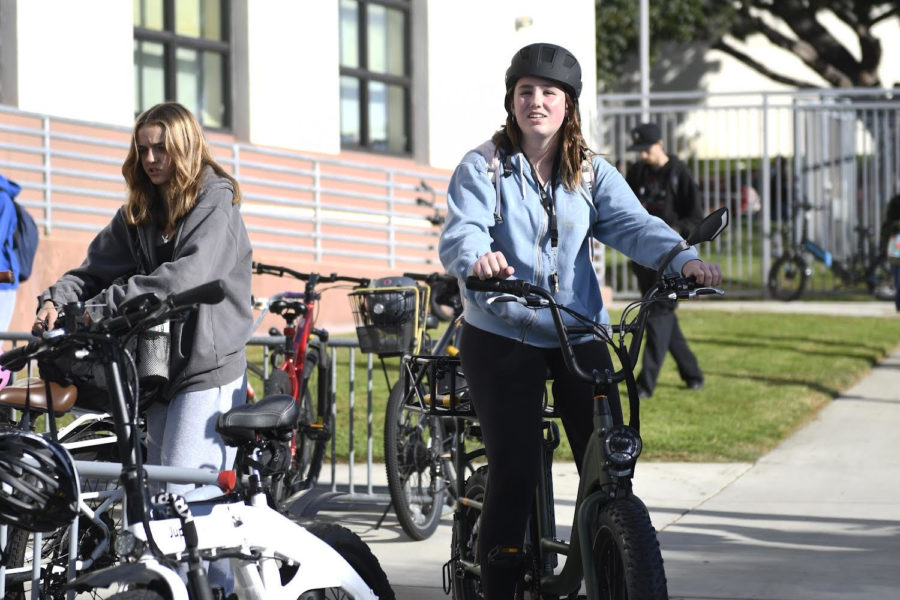E-Bike Endangerment
The conveniences and concerns over the popular form of teenage transport.
Driver’s education teaches drivers to be safe on the road. This same responsibility applies to newly popularized e-bikes. As Redondo has recently witnessed the repercussions associated with the misuse of e-bikes among riders and citizens, the consideration arises over whether or not the collisions are a result of youthful recklessness or other factors.
E-Bikes are a common form of transportation among students. Sophomore Sophia St. John doesn’t have her drivers license or permit yet, so she gets to and from school on her e-bike.
“It’s easy and convenient. You don’t pedal, you don’t do anything. You just go. The physical exertion is really low, but you still travel the same distance,” St. John said.
Despite their convenience, e-bike safety concerns are on the rise. A study from the Consumer Product Safety Commission found that from 2017 to 2022, the number of injuries on e-bikes has risen by 70 percent. Following a recent fatal e-bike crash in Carlsbad, the Advocacy Director at the San Diego County Bicycle Coalition refused to believe that the accident was the fault of the e-bike itself but rather several street hazards.
Freshman Tyler Wen rides to school on his e-bike every day and believes that the safety issues are not derived directly from the bike itself.
“Some streets on the way to school have bike lanes, and those are the streets that feel the safest for bikers, as you don’t have a car pressuring you to go faster and no immediate threat of an accident,” Wen said. “But aside [from] the roads, accidents aren’t because of the vehicle. They’re less the fault of cars or bikes, they’re human error.”
Detective Paul Devine from the Los Angeles Police Department doesn’t believe there are any problems with e-bikes themselves—similarly to Wen, he thinks that the rider is a significant part of what determines how safe they’ll be using the bike.
“It’s a viable mode of transportation as long as everybody that’s using e-bikes is responsible and understands that they have to follow the rules of the road. But, sometimes kids forget that it’s their responsibility as well,” Devine said.
Devine emphasizes that taking precautions, such as stopping at stop signs, signaling at turns, wearing a helmet and following the speed limits are all crucial to riding safely and avoiding deadly accidents.
Both Wen and St. John agree that e-bikes are beneficial for building independence in teenagers because being in control of their own safety creates a “stronger sense” of responsibility.
“Having access to an e-bike as a mode of transportation is great because you no longer have your parents dragging you around everywhere,” St. John said. “Setting up plans and getting places on your own becomes a lot easier.”
Wen feels that having an e-bike is “freeing” since it unlocks a sense of having “unlimited access” to the city. According to Wen, he no longer needs to confine where he hangs out with his friends to areas close to his home.
“Teens can go farther than they normally would [because of] e-bikes,” Devine said. “It’s just important to keep in mind that when riding an e-bike that you have to stick to the rules. I would want to make sure my child is responsible, no matter what type of transportation they’re using.”

Hi. I'm Deeksha Prasad. This is my second year on High Tide. I love basketball, reading, and writing, and coffee. My starbucks order, depending on the day, is either an iced chai with cold foam...







